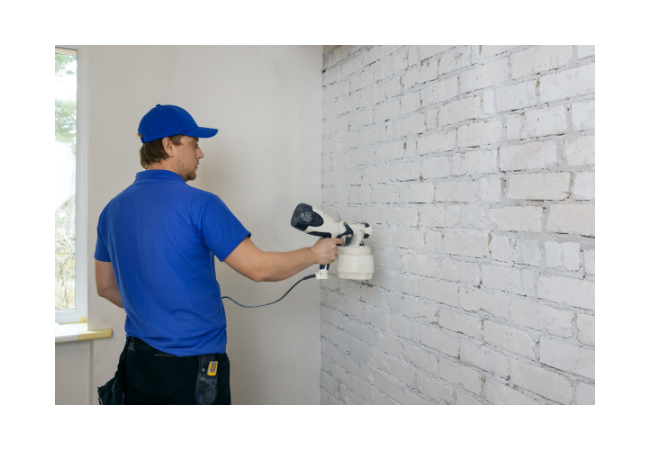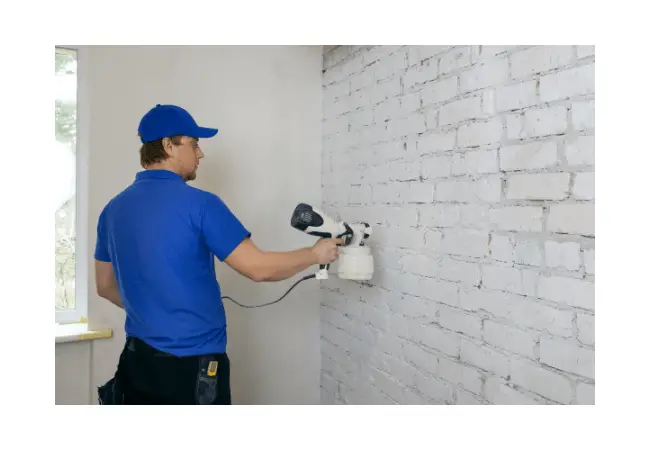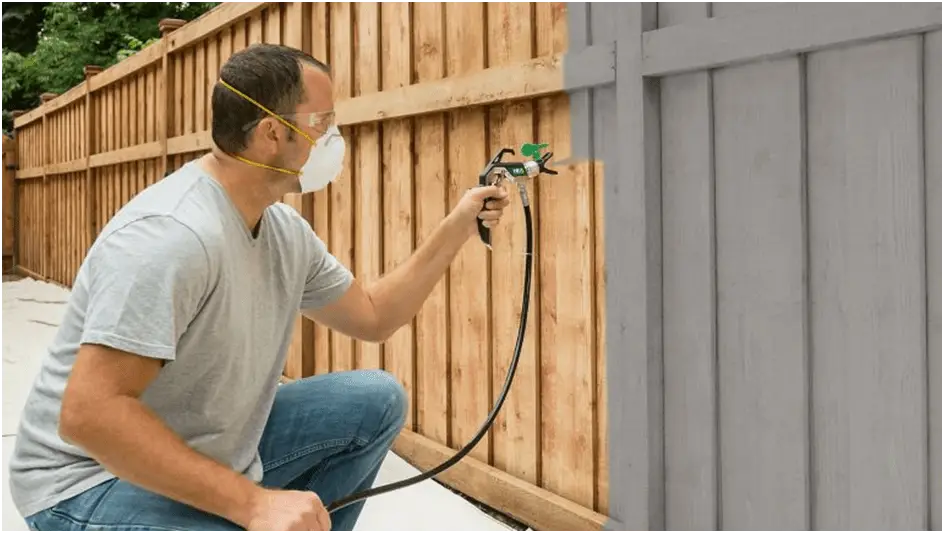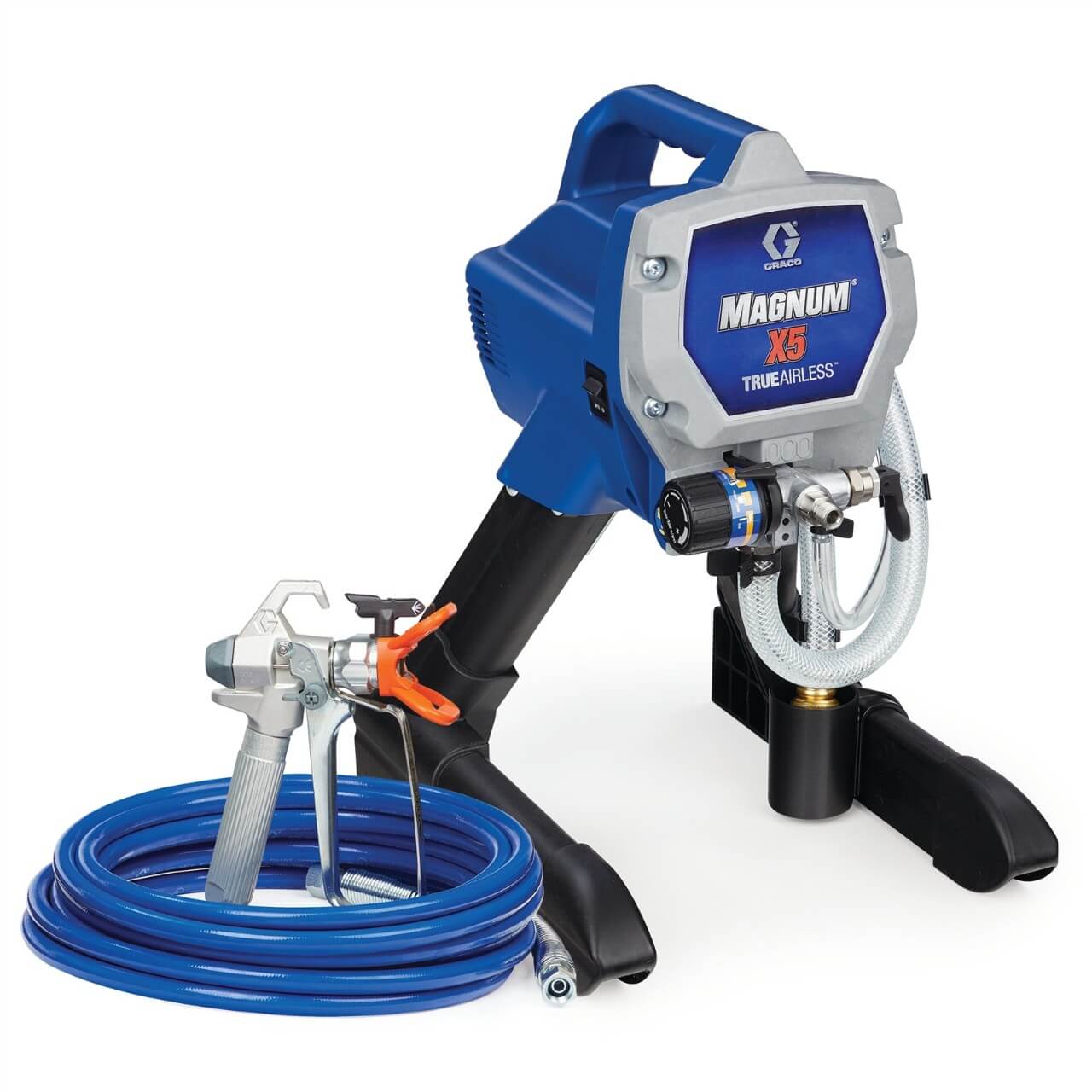Using a paint sprayer can be a game-changer for both DIY enthusiasts and professional painters alike, offering a faster and smoother application than traditional painting methods. Knowing how to use a paint sprayer can efficiently cover large areas with an even coat of paint, reducing the time and effort spent on a project. Before diving into the task, it’s important to understand the types of paint sprayers available, their particular uses, and the kind of paint they support. Knowing the right equipment for your next paint job is the first step toward a successful painting project.
Proper preparation of the work area and the setup of how to use a paint sprayer are critical for a desirable outcome. Ensuring that the space is well-ventilated and appropriately masked off to avoid overspray is just as important as selecting the right kind of paint for your paint sprayer step.
Once set up, mastering various spraying techniques and understanding how to handle the spray gun for different surfaces becomes the focus. It requires some practice, and users should be aware that developing proficiency might take some time. With practice, common issues can be quickly resolved, and consistent maintenance ensures the longevity and reliability of the equipment.
Table of Contents
Key Takeaways
- Paint sprayers offer efficient and even paint applications for various projects.
- Proper setup and preparation are essential for the effective use of an airless paint sprayer.
- Regular practice and maintenance are key to mastering spraying techniques and spray gun care.
Preparing Your Space
Before you learn how to use a paint sprayer, it’s essential to meticulously prepare the space in which the work will be performed. This ensures that the surrounding areas are protected from overspray and that the individual using the sprayer is adequately equipped with the necessary safety equipment.
Covering Surroundings
One must ensure when you use a paint sprayer that all surfaces not intended to be painted are covered with drop cloths or plastic sheeting over drop cloths. These materials act as barriers, capturing any unintended spray:
- Floors: Secure drop cloths firmly on the ground, taping edges if necessary.
- Furniture: Move furniture out of the room or cover it with plastic sheeting.
- Walls: Adjacent walls should be protected with painter’s tape along the edges and covered with cloths if within close vicinity of the painting area.
Safety Equipment
Proper safety equipment is vital to protect oneself from the possible hazards of paint spraying:
- Respiratory Protection: Always wear a respirator to guard against inhaling paint fumes.
- Eye Protection: Goggles are crucial to shield the eyes from harmful chemicals.
- Skin Protection: Gloves and full-body coveralls prevent direct contact with paint, minimizing skin exposure.
- General Protective Gear: A mask can be used in addition to a respirator for extra protection, and sturdy footwear should be worn to protect feet from drips and spills.
Selecting the Right Paint
The success of using a paint sprayer hinges on choosing the correct paint type and ensuring it is adequately prepped for application.
Choosing Paint Type
When selecting paint for HVLP sprayers, one must consider the project’s substrate and desired finish.
- Latex Paints: They are water-based and ideal for interior walls and ceilings due to their ease of clean-up and low odor. They require thinning to achieve the right viscosity for a sprayer.
- Oil-Based Paints: These are suitable for trim and outdoor projects, offering a durable finish. Oil-based paints should be thinned with mineral spirits to reach the appropriate consistency.
For wood projects, stains can also be applied with a sprayer. Stains soak into the wood to provide color and protection without forming a thick topcoat like paint.
Prepping the Paint
Proper paint preparation is essential for an even application of wet paint and to prevent clogs in the sprayer.
- Viscosity:
- The paint needs to have the correct viscosity for use in a sprayer. If the paint is too thick, it will not atomize correctly and could clog the sprayer.
- A viscosity cup is a tool used to measure if the paint flows within the acceptable range for spraying.
- Thinning:
- Latex paints might require the addition of water or a specific paint thinner to achieve the correct viscosity.
- Oil-based paints often need mineral spirits for proper thinning.
- Straining:
- Paints should be strained through a paint strainer to remove any impurities or clumps that could obstruct the sprayer nozzle.
- This process is critical for a smooth finish and to maintain the sprayer’s proper function.
Setting Up the Paint Sprayer
Proper setup of the pressure control knob on airless sprayers is crucial for an efficient and effective spray painting job. It involves assembling the unit, understanding the controls, and filling it with paint.
Assembling the Sprayer
A paint sprayer typically consists of several components such as a pump, hose, nozzle, a spray tip itself, and paint container. To assemble:
- Connect the hose to the pump securely to prevent leaks.
- Attach the nozzle to the tip of the hose, making sure that it fits tightly.
- Ensure the siphon tube or paint cup is properly attached to the paint container.
Understanding Controls
Paint sprayers come with a variety of controls that adjust the flow and pattern of paint:
- Pressure control: Determines the force at which paint is ejected.
- Volume control: Adjusts the amount of paint that flows through the system.
- Spray pattern control: Modifies the shape of the paint spray, from circular to a wide fan.
Consult the sprayer’s manual to understand each pressure control knob’s and sprayer tips function and location.
Filling the Paint
The type of paint being used dictates the method for filling the sprayer. Make sure the paint you begin spraying is compatible with your sprayer before starting.
- For siphon sprayers, immerse the siphon tube into the paint container.
- In the case of cup sprayers, pour paint into the cup through a strainer to remove clumps.
Note: Always check for leaks and secure all connections before using the sprayer.
Spraying Techniques

Mastering the right spraying techniques ensures a quality finish with a smooth and even coat. Handling the sprayer correctly, applying with proper methods, and controlling the paint flow are crucial for optimal results.
Sprayer Handling
When you use a paint sprayer, it is imperative to hold the airless sprayer or spray gun firmly and use both hands if necessary for better stability. Trigger control is essential; the user should squeeze the trigger only when moving to avoid runs and sags. Short strokes are less effective than long, continuous movements. The sprayer should be at a consistent distance from the surface, typically 6-12 inches, to maintain a uniform spray pattern.
Application Methods
To achieve an even coat, overlap each pass by approximately 50%. This technique helps in avoiding streaks and provides full coverage. The movement should be parallel to the surface and maintained at a consistent speed. The sprayer tip size and the shape of the spray pattern should match the project at hand. Horizontal strokes are typically used for side-to-side spraying, while vertical strokes are applied for up-and-down spray motions.
Managing the Flow
The flow of paint can be adjusted using the sprayer’s settings to suit the consistency of the paint and the type of job. The correct amount of paint is critical; too much paint can result in drips, while too little can lead to an uneven application. Users must regularly check the paint supply and air pressure to ensure a steady flow of paint. Consistent checking can prevent splattering and other irregularities in the paint spraying technique.
Advanced Tips for Professional Results
Distance Management: The distance between the sprayer nozzle and the surface is crucial for a smooth finish. A general rule is to hold the spray gun 6 to 8 inches from the target area. Adjusting this distance is important when working with different materials; closer for finer detail and further back for broad surfaces.
- Low vs. High Pressure: Using low pressure promotes control and reduces overspray, particularly beneficial when applying stains or working on decks. High pressure can be advantageous for covering large areas swiftly but may compromise the finish quality if not handled correctly.
- Finish Quality: To achieve a professional-grade finish, always start with a test spray on a scrap piece to gauge the paint flow and pattern. Always keep the sprayer moving to avoid drips and uneven layers when you use a paint sprayer to apply paint.
Paint Choices: The type of paint also affects the finish quality.
- Oil-Based Paint: Ideal for high-traffic areas due to its durability. Apply using a high-pressure setting for a fine mist, but be mindful of ventilation.
- Latex Paint: Requires a different set of parameters; a higher pressure setting can yield a smooth coating, yet ensure the sprayer can handle the viscosity.
Surface Preparation: The result is also dependent on the surface readiness.
- Deck: Ensure it is clean and dry. Fill any dings or holes before painting for a uniform texture.
- Stains: Require a lower pressure for application. The key is to apply the stain evenly and work it into the wood grain for a lasting finish.
Remember, maintaining the equipment is as important as the application process to apply paint itself. Clean the sprayer thoroughly after each use with a fresh cleaning solution to prevent clogs and ensure it’s ready for the next project.
Frequently Asked Questions – How to use a paint sprayer
This section provides essential insights into using a paint sprayer effectively, from preparation to maintenance and specific techniques for different applications.
What are the best practices for prepping an area before using a paint sprayer?
Before using a paint sprayer, it is crucial to protect the surrounding area from overspray. Remove all furniture and cover floors and any immovable items with drop cloths. Use painter’s tape to shield windows, doors, and trim. Ensure the surface to be painted is clean, dry, and sanded if necessary.
What are the steps to properly clean and maintain a paint sprayer after use?
After using a paint sprayer, flush the system with a cleaning solution appropriate for the type of paint used. Dismantle the nozzle and clean it thoroughly with a soft brush to prevent clogging. Lubricate any moving parts to maintain smooth operation. Always refer to the manufacturer’s manual for specific instructions.
What are the differences between HVLP and airless paint sprayers, and when should you use each?
HVLP (High Volume Low Pressure) sprayers use a high volume of air from an air compressor to atomize paint at low pressure, resulting in a smoother finish and less overspray. They are ideal for detailed work and interior projects. Airless sprayers pump paint at high pressure through a small nozzle, quickly covering large areas. They are best for exterior surfaces and larger-scale jobs.
What techniques should be used for painting a ceiling with a paint sprayer without causing overspray?
When painting a ceiling with a paint sprayer, use a spray guard to minimize overspray. Start by spraying paint at the ceiling’s edge and work your way in using steady, overlapping strokes. Adjust the pressure settings to suit the viscosity of the paint and the distance from the ceiling, keeping movements controlled and even.
How do you adjust a paint sprayer to ensure even coverage when painting exterior surfaces like fences?
For even coverage on exterior surfaces like fences, adjust the pressure settings according to the paint’s thickness. Test the spray pattern on cardboard before starting, and select the appropriate nozzle size for the job. Keep the sprayer at a consistent distance from the surface and overlap your strokes by about 30% to avoid missed spots.
What safety precautions should be taken when using a paint sprayer for indoor or outdoor projects?
Safety is paramount when using a paint sprayer. Always wear protective gear like goggles, masks, and gloves. Ensure good ventilation when working indoors. Be aware of the sprayer’s direction to prevent back spray and always follow the manufacturer’s instructions and guidelines for safe operation and proper equipment handling.




Leave a Reply